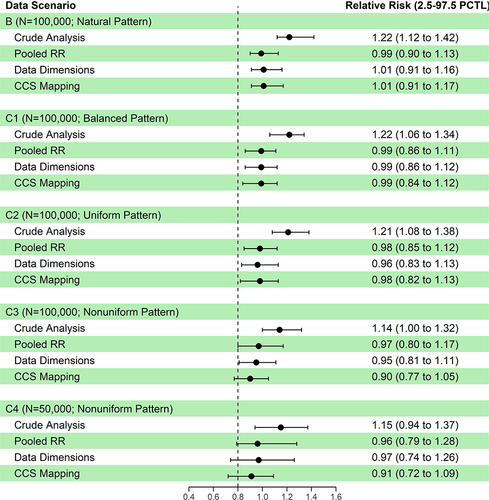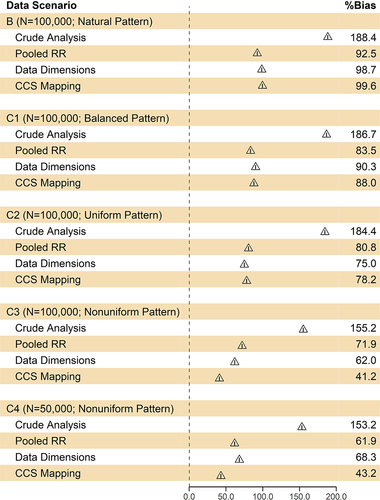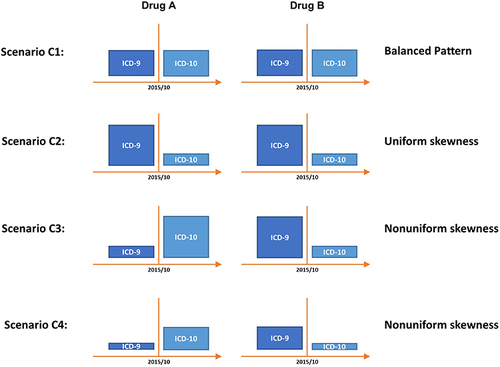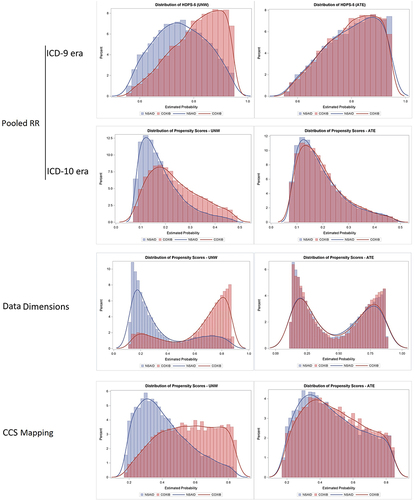Figures & data
Table 1 Composition of Resampled Cohorts in Each Data Scenario
Table 2 Characteristics of Patients in the Parent and Resampled Study Cohorts
Figure 2 Summary of relative risk estimates using three different adaptation strategy for HDPS in each data scenario.

Figure 3 Residual bias in log relative risk using three different adaptation strategies for HDPS in each data scenario.




